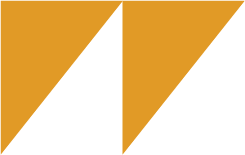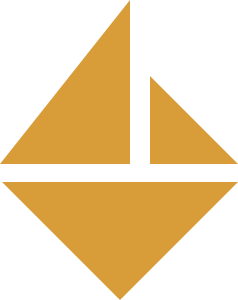Product Development
SaaS Based Product Development
Software as a service, or SaaS, is one of the most interesting areas of software development today. That’s because SaaS software development is versatile, applicable to virtually any industry, and designed to solve problems impacting companies and people.
A SaaS development platform allows users to create cloud-based applications that solve problems, provide analysis, or otherwise allow people to effectively use the internet to achieve specific goals.
saas product development process
saas based product development
saas development platform

B2B software companies served... and counting
B2B SaaS
In its simplest terms, SaaS is any type of cloud-based software that lets users access an application over the internet, enabling them to use it seamlessly within their organization.
Developing a SaaS platform is an option for those with an idea to improve a problem or a specific goal, but it’s not always a simple process. The SaaS product development process is comprehensive and can be quite complicated. Yet, with the right SaaS based product development process, organizations can create highly effective, valuable products, including web and mobile applications.
SaaS Development process
The key here is understanding what goes into the process and what the SaaS development cost is likely to be.
The first step is understanding the end goal, such as what you want the product to achieve. Then the hard part is to develop that solution. Often, companies and individuals face limitations at this point, as trying to navigate the SaaS development cost can be difficult at best. Yet, with the right tools and resources, creating a solid business plan and platform is possible.
For those who want to build their product, which could be any application, having a scalable, disciplined approach to the process enables the best long-term outcome. Consider how web and mobile application development can create the profitable business model you are looking for within your company.
Product Development
What Is SaaS?
So, what is SaaS? SaaS is a software delivery model that allows individuals to access and use internet software applications. At one time, to use any type of software, a consumer had to purchase the software and install it on their computer. They could use that software on only one desktop, creating an expensive scenario when numerous company employees needed to use that software.
SaaS components work differently. The software itself is hosted on a remote server. The software provider typically maintains these, rather than the company or individual, and customers access the software through their web browser or, in many cases, a mobile app.
what are the characteristics of saas
saas components
what is saas
What are the characteristics of SaaS that make it so different and beneficial?
- It helps to reduce upfront costs in development and use.
- It is scalable to meet the needs of customers at all levels.
- For many organizations, it offers ample flexibility to be used in any way deemed necessary by the user (which could differ from person to person).
- By far, the best benefit is the accessibility, since employees can begin using it immediately.
- There’s also no need to invest in highly expensive infrastructure to support these programs, but you can still use them consistently and without limitation from any internet connection.
Modern SaaS typically requires the user to pay a fee over the year or by the month to access the software. However, this type of on-demand service puts SaaS within reach of many organizations that could not afford a large-scale investment in hardware and software otherwise.
modern saas
characteristics of saas
b2b saas founders

Product development techniques
Common characteristics include:
- Multi-tenant architecture, which allows all vendor clients and applications to use a single, common infrastructure and code
- Easy customization, allowing the business to utilize the software in a way that meets their needs
- Better access from network devices is necessary, so companies can easily monitor data use and manage privileges.
multi-tenant architecture
saas applications
saas features
SaaS Examples
Many of the software applications people use today are, in fact, SaaS products. Here are some SaaS product examples being used readily for personal and business needs.
- Google Workspace (that includes everything from Google Docs to Gmail)
- DocuSign
- Trello
- Salesforce
- Spotify
- Mailchimp
- Zoom
These SaaS examples fall into a wide range of categories, each offering users functionality and benefits. Here are some SaaS application types to consider.
saas product development strategy
saas development guide
Golden Section
Customer Relationship Management
Customer relationship management (CRM) software helps to manage customer data, often providing resources to support customer data storage, marketing, and customer relationship status through the automation of things like sales tasks and emails.

resource planning
Enterprise Resource Planning
Enterprise resource planning (ERP) software allows companies to manage various business processes in a single platform, like accounting, compliance, budgets, and risk management. In addition, it provides a way to track processes in a single space.
accounting softwares
Accounting
Accounting software has become accessible through SaaS as well, including tools such as QuickBooks and Xero that enable companies to manage all of their financial data in a single, easy-to-use application.
SaaS
Project Management Software
This type of software is an effective way for companies to enable team members to collaborate on projects and track the process of various tasks. This may include document management and real-time synchronization of work projects.
platforms
Communication Platforms
Numerous SaaS examples exist in communication platforms, including tools like Slack. They enable people to share files, send messages, and interact in a streamlined, efficient manner.
SaaS solutions also include tools for managing most business functions such as financial management, human resource management, and billing. They can be designed for B2B as well as B2C markets, and sometimes both. Some products are quite diverse, offering IT analytical tools to those providing video streaming. This flexibility makes SaaS quite the powerful resource for any company.
SaaS
SaaS vs. PaaS
It’s important to note the difference between SaaS and Platform as a Service (PaaS). In PaaS, users have access on-demand to a ready-to-use cloud-hosted platform. This can be used to develop, run, and maintain applications. It is often managed by in-house IT teams within the company. By comparison, SaaS is an on-demand, ready-to-use cloud-hosted application software. With it, you no longer need that in-house team but rely instead on the SaaS provider’s resources and support.
SaaS Product Development Lifecycle
Creating SaaS products requires working through numerous stages, which is called the software development life cycle. For those who have an idea of what they wish to create or develop on a platform like this, it is critically important to have the best tools and resources available to support that process.
Though it’s far more complex than this, the SaaS product development lifecycle typically focuses on the following processes.
- Envisioning: In this part of the product lifecycle, the focus is on identifying new business opportunities and determining what value the solution can offer to the most likely users.
- Platform evaluation: This SaaS product development strategy component focuses on cloud provider selection (since this is such a big part of the process) along with identification of the current services available and how they can be improved within the new product.
- Planning: During this stage, a cloud platform is identified to build the service, focusing on creating a predictable delivery of the desired service. This involves aggregating feature requirements, creating a project plan, schedule, and resource plan, and then working through risk mitigation.
- Subscribing: A production quality subscription is acquired. The focus in this stage will be on negotiating service level agreements, pricing, validating disaster recovery plans, assessing the feasibility of security architecture, and working through risk mitigation concerns that become evident.
- Developing: Here, the design specifications are refined, and the product lifecycle begins to showcase a workable product. This will include the design environment setup, deployment and testing, and integration of security solutions.
- Operations: This stage of the SDLC focuses on getting the platform in place and operational, including managing load testing, deployment, disaster recovery testing, and support plan management.
The software development life cycle can be altered as product needs change or as the project’s goals become different.
saas model platforms
SaaS Features
SaaS model platforms can incorporate numerous features to customize the function of systems. This may include collaboration for teams, customer engagement tools, and cost-reduction resources. The goal is often to improve communication opportunities. Some key benefits they can offer include:
- Improve lead management through enhanced identification and monitoring of sales cycles.
- Boost data management.
- Improve sales and marketing collaboration methods to gather and share customer insights.
- Automate tasks, including marketing tasks, or streamline other activities across the group.
- Improve contact management through tracking and organizational tools.
What are the main features of a successful SaaS designed to do? Ultimately, they must be able to meet the unique needs of the end user. The best benefits include scalability, flexibility, and low setup and infrastructure costs. In addition, expect SaaS features to make tasks easier to manage over the long term.
saas model platforms
main saas features
saas features and benefits
Reaching a New Client Base Means Creating New Solutions
Developing a streamlined, effective SaaS platform to address your organization’s unique needs or your product goals is critical. Having access to venture capital is also a critical component. Learn more about how Golden Section supports the development of SaaS platforms that are changing the world.
VENTURE CAPITAL
SaaS Platforms
Golden Section
Here’s what our partners are saying…

From our MVP in 2015 to demonstrated Product Market Fit to strategic support with our growth funding, the Golden Section team has been an indispensable partner and resource for System Surveyor.
Christopher Hugman
Founder & CEO, System Surveyor

Since QMSC’s inception, Golden Section has provided valuable direction regarding strategic market alignment, branding, and most importantly intuitive guidance for our technology roadmap.
Marshall R. Williams
Founder, QMSC

As an entrepreneur, I need to have a partner who understands my vision, not just a digital order taker. Golden Section has exceeded my expectations, providing tools and people to help grow my business rapidly.
Charles Turner
Founder & CEO, KARE
